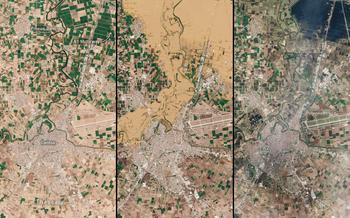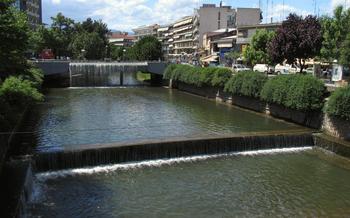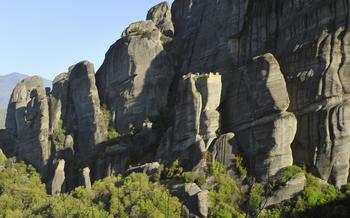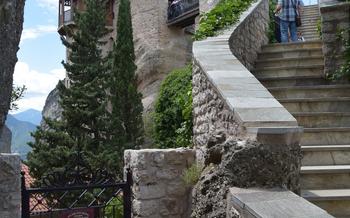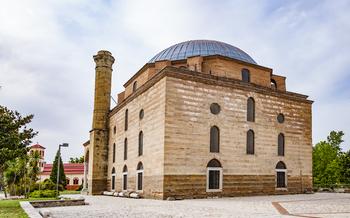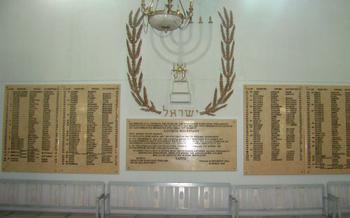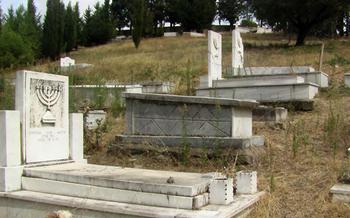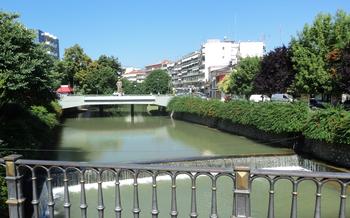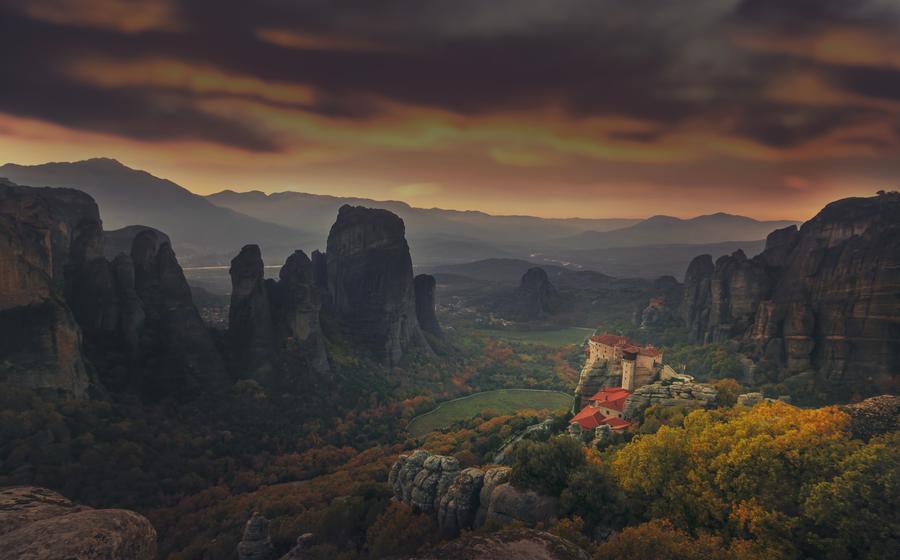
Meteora Monasteries
- Meteora Monasteries: An Overview
- Planning Your Visit
- Exploring the Monasteries
- Hiking and Nature Trails
- Photography Opportunities
- Ideal Vantage Points
- Recommended Camera Settings and Techniques
- Tripod Usage and Composition
- Sharing Your Captures
- Accommodation Options
- Dining Experiences
- Cultural Insights
- Visiting Hours and Admission Fees
- Guided Tours vs. Independent Exploration:
- Accessibility for Visitors with Disabilities
- Volunteer Opportunities
- Off-the-Beaten-Path Experiences
- Local Festivals and Events
- Insider Tip: A Hidden Gem Revealed
Meteora Monasteries: An Overview
Meteora, a breathtaking natural wonder nestled in central Greece, is renowned for its awe-inspiring monasteries perched atop colossal rock pillars. These architectural marvels, constructed in the 14th century, stand as testaments to the ingenuity, faith, and resilience of the monks who sought refuge and spiritual enlightenment in this extraordinary landscape.
With their distinct architectural styles and rich history, each of the six active monasteries offers a unique experience. The Monastery of Great Meteoron, the largest and oldest, boasts stunning frescoes depicting biblical scenes. The Monastery of Varlaam impresses with its intricate wood carvings and panoramic views from its balconies. The Monastery of Rousanou, with its beautiful courtyard and well-preserved frescoes, offers a glimpse into the daily lives of the monks.
Designated as a UNESCO World Heritage Site, Meteora's unique geographical location and stunning scenery make it a must-visit destination for travelers seeking a combination of history, nature, and spirituality.
Planning Your Visit
Meteora's allure extends beyond its captivating scenery; it's a place best savored at a leisurely pace. To make the most of your visit, plan your trip during the shoulder seasons (April-May and September-October) when the weather is pleasant, and the crowds are thinner. Meteora is accessible by road, with regular bus services connecting it to major cities like Athens and Thessaloniki. Once in Meteora, immerse yourself in its wonders by staying for at least two nights. This duration allows ample time to explore the monasteries, embark on scenic hikes, and soak in the tranquility of the surroundings. To enhance your experience, consider booking a guided tour or arranging private transportation to delve deeper into the region's history and culture.
Exploring the Monasteries
Of the 24 monasteries originally built upon the Meteora rock pillars, six remain active and welcome visitors from around the world. Each monastery boasts unique architectural features and religious artifacts that tell stories of faith, devotion, and resilience.
Monastery of Great Meteoron: The largest and oldest monastery, it houses priceless Byzantine icons, frescoes, and manuscripts.
Varlaam Monastery: Known for its stunning frescoes depicting scenes from the Bible and the lives of saints.
Monastery of St. Nicholas Anapausas: Perched on a rock that resembles a hand, it offers breathtaking views of the surrounding landscape.
Monastery of Rousanou: Dedicated to the Transfiguration of Christ, it features intricate wood carvings and a beautiful bell tower.
Monastery of St. Stephen: Offers a glimpse into the monastic lifestyle, with exhibits showcasing the monks' daily routines and rituals.
Monastery of Holy Trinity: Built on the highest rock pillar, it requires a challenging climb but rewards visitors with panoramic views that are simply divine.
Before entering the monasteries, remember to dress respectfully, covering your shoulders and knees. Silence and humility are highly valued, so maintain a peaceful demeanor and refrain from loud conversations.
Photography is generally permitted in the monasteries, but be mindful of designated areas where it is restricted. Capture the stunning views from designated vantage points and share your remarkable photographs with the world, using social media platforms to inspire others to embark on this extraordinary journey.
Hiking and Nature Trails
The Meteora region offers a plethora of scenic hiking trails that connect the monasteries, providing breathtaking panoramas of the surrounding landscape. These trails range in difficulty from easy to challenging, catering to hikers of all levels.
For those seeking a leisurely stroll, the trail between the Great Meteoron Monastery and Varlaam Monastery is a great option. This relatively flat path offers stunning views of the surrounding rock formations and monasteries. For a more challenging hike, the trail leading to the Holy Trinity Monastery, perched atop a towering rock pillar, provides a rewarding experience.
When embarking on your hiking adventure, be sure to pack appropriate gear, including comfortable hiking shoes, layers of clothing, and plenty of water. The weather in Meteora can change quickly, so it's essential to be prepared for all conditions.
Safety is paramount while hiking in the Meteora region. Always inform someone of your intended route and expected return time. Stay on designated trails and be aware of loose rocks and uneven terrain. Emergency contact information should be readily accessible in case of any unforeseen circumstances.
Photography Opportunities
Meteora is an awe-inspiring destination that attracts photographers of all levels. The monasteries, perched atop colossal rock pillars, provide a stunning backdrop for capturing breathtaking images.
Ideal Vantage Points
For panoramic shots, head to the designated viewpoints located near each monastery. These vantage points offer unobstructed views of the monasteries and the surrounding landscape.
Recommended Camera Settings and Techniques
To capture the best images, use a wide-angle lens to fit the entire monastery within the frame. Experiment with different shutter speeds to create a sense of movement or freeze the action.
Tripod Usage and Composition
A tripod is essential for ensuring sharp and steady shots. Experiment with different compositions to create visually appealing images. Try incorporating leading lines, such as the winding paths that connect the monasteries, to draw the viewer's eye towards the main subject.
Sharing Your Captures
Share your stunning photographs with the world on social media platforms such as Instagram and Flickr. Use relevant hashtags like #MeteoraMonasteries and #VisitGreece to connect with other photographers and inspire fellow travelers.
Accommodation Options
Meteora offers an array of accommodation options to suit every traveler's preferences and budget. In the nearby towns of Kalabaka and Kastraki, you'll find a range of hotels and guesthouses, from charming family-run establishments to modern hotels with panoramic views. For a truly immersive experience, consider staying in one of the traditional guesthouses within the monasteries themselves. These guesthouses offer a unique opportunity to witness the monastic lifestyle firsthand and enjoy breathtaking views from your room. Advance booking is highly recommended, especially during the peak tourist season, to secure your preferred accommodation. Whether you choose to stay in a cozy guesthouse or a modern hotel, you'll find comfortable accommodations that complement your Meteora adventure.
Dining Experiences
Meteora offers an array of dining experiences that tantalize the taste buds and provide a glimpse into the region's culinary heritage. In nearby towns like Kalabaka and Kastraki, you'll find traditional tavernas and restaurants serving authentic Greek cuisine. Indulge in delectable dishes such as the renowned Meteora salad, featuring fresh tomatoes, cucumbers, onions, and feta cheese, all drizzled with a tangy vinaigrette. Savor the flavors of succulent grilled meats, cooked to perfection over charcoal and seasoned with aromatic herbs. Don't miss the homemade pastries, a testament to the region's rich baking traditions.
Enhance your dining experience by choosing restaurants with outdoor seating, where you can savor your meal while enjoying panoramic views of the monasteries and the surrounding landscape. For those seeking vegetarian and vegan-friendly options, rest assured that many establishments cater to your dietary preferences, offering a variety of delicious plant-based dishes.
Cultural Insights
The Meteora Monasteries hold immense cultural and religious significance in Greece. They have been an integral part of Greek Orthodox Christianity for centuries, serving as spiritual centers and places of worship. The monasteries played a crucial role in preserving Greek culture and identity during challenging times, including periods of foreign occupation.
Exploring the monasteries offers a unique opportunity to delve into the monastic lifestyle and rituals. Visitors can witness the daily routines of the monks, from their prayers and meditation to their work and chores. The monasteries also house valuable religious artifacts, including icons, manuscripts, and relics, which provide a glimpse into the rich history of the Orthodox Church.
Engaging in conversations with the monks, if permitted, can be a deeply enriching experience. They can share their insights on the monastic life, their spiritual beliefs, and the history of the monasteries. Visitors are encouraged to be respectful and mindful of the monks' time and privacy.
It is important to remember that the monasteries are active religious communities, and visitors should behave in a respectful manner. This includes dressing modestly, maintaining silence in designated areas, and refraining from disruptive activities. By embracing the cultural and religious significance of the Meteora Monasteries, visitors can gain a deeper understanding of Greek Orthodox Christianity and its enduring influence on Greek society.
Visiting Hours and Admission Fees
Visiting hours for the Meteora Monasteries vary depending on the monastery and the time of year. Generally, they are open to the public from morning until early afternoon, with some closing for a few hours during the midday heat. It's advisable to check the official websites or contact the monasteries directly for the most up-to-date information.
Admission fees are typically charged for entry to each monastery, ranging from a few euros to several euros per person. Discounts are often available for students, seniors, and families. To avoid long lines, consider purchasing tickets online in advance, especially during peak tourist season.
Plan your itinerary carefully to make the most of your visit. Allocate sufficient time to explore each monastery and factor in any additional activities you may want to experience, such as hiking or photography. Remember to dress respectfully and adhere to the guidelines and dress code of each monastery to ensure a smooth and enjoyable visit.
Guided Tours vs. Independent Exploration:
Whether you prefer the convenience and insights of an organized tour or the freedom and flexibility of independent exploration, both options offer unique advantages when visiting the Meteora Monasteries.
Guided Tours:
- Benefits:
- Hassle-free transportation to and from the monasteries.
- Knowledgeable guides providing historical and cultural commentary.
-
Optimized itineraries ensuring you see the highlights efficiently.
-
Considerations:
- Limited flexibility to explore at your own pace.
- Fixed schedules may not align perfectly with your interests.
- Potential for larger group sizes, affecting the personal experience.
Independent Exploration:
- Benefits:
- Complete freedom to choose your itinerary and pace.
- Opportunity for deeper exploration and photography.
-
Flexibility to linger longer at your favorite spots.
-
Considerations:
- Requires planning and research to create an effective itinerary.
- Need for reliable transportation to navigate between monasteries.
- Potentially missing out on valuable historical insights.
Ultimately, the choice between a guided tour and independent exploration depends on your personal preferences and priorities. If you value convenience, historical context, and efficiency, a guided tour is an excellent option. For those seeking flexibility, a deeper connection with the monasteries, and the freedom to explore at their own rhythm, independent exploration offers a rewarding experience.
Accessibility for Visitors with Disabilities
The Meteora monasteries are committed to ensuring that all visitors have a fulfilling and accessible experience. Each monastery is equipped with accessibility features to accommodate visitors with disabilities. Ramps, handrails, and designated parking spaces are available to facilitate easy access. Visitors with mobility challenges can request assistance from the monastery staff, who are trained to provide support and guidance.
For those unable to climb the steps to the monasteries, alternative viewpoints and activities are available. The nearby town of Kastraki offers stunning views of the monasteries from a lower elevation. Visitors can also explore the Meteora Museum of Natural History, which showcases the region's unique geology and biodiversity. The museum is wheelchair accessible and provides informative exhibits on the history and culture of Meteora.
Planning an accessible visit to the monasteries is essential. Visitors are encouraged to contact the monasteries in advance to inquire about specific accessibility needs and arrangements. The monasteries are committed to making the necessary accommodations to ensure that all visitors can fully experience the beauty and spirituality of Meteora.
Volunteer Opportunities
If you seek a truly immersive experience and want to contribute to the preservation of Meteora's monasteries, consider volunteering your time. Several monasteries welcome volunteers from all over the world to assist in various tasks, such as maintenance, gardening, and hospitality. These programs typically range from a few weeks to several months, and volunteers are provided with accommodation and meals. Volunteering offers a unique opportunity to learn about monastic life, interact with the monks, and make a meaningful contribution to the upkeep of these sacred sites. To inquire about volunteer opportunities, contact the individual monasteries directly or research reputable organizations that facilitate volunteer placements.
Off-the-Beaten-Path Experiences
Beyond the six active monasteries, the Meteora region hides a treasure trove of lesser-known monasteries and hermitages waiting to be explored. These hidden gems offer a tranquil retreat from the crowds, allowing you to immerse yourself in the spiritual atmosphere of Meteora.
Venture off the beaten path to discover the Monastery of Ypapanti, perched on a remote rock pillar. Experience the solitude of the Monastery of Saint Nicholas Anapafsas, nestled in a secluded valley. Explore the ruins of the Monastery of Varlaam, revealing glimpses of its rich history.
Hike along hidden trails to uncover breathtaking viewpoints that unveil the vastness of the Meteora landscape. Seek out the secluded viewpoint of Doupiani Rock, offering panoramic vistas of the monasteries and the surrounding valleys.
Embrace the local culture by engaging with the friendly villagers and farmers who call Meteora home. Learn about their traditions, customs, and way of life. Immerse yourself in the simplicity and authenticity of rural Greece.
Remember to approach these off-the-beaten-path experiences with respect and humility. Dress modestly, avoid disturbing the peace of the monasteries, and ask permission before entering private property. Your curiosity and open-heartedness will be rewarded with unforgettable encounters and a deeper understanding of Meteora's spiritual and cultural heritage.
Local Festivals and Events
Amidst the serene atmosphere of Meteora, the vibrant energy of local festivals and events adds a unique dimension to the region's cultural tapestry. Throughout the year, nearby towns and villages host celebrations that showcase Greek traditions, religious observances, and the warmth of local hospitality.
One of the highlights is the Meteora Easter Festival, a grand celebration that attracts pilgrims and visitors from across the country. Experience the fervor of religious processions, witness the lighting of the Holy Fire, and indulge in traditional feasts that bring the community together.
Don't miss the Meteora Mushroom Festival held annually in the fall. Celebrate the region's rich culinary heritage as local chefs prepare mouthwatering dishes featuring wild mushrooms foraged from the surrounding forests.
For a taste of traditional Greek music and dance, attend the Trikala Folklore Festival, held in the summer months. Immerse yourself in lively performances, vibrant costumes, and the infectious rhythm of traditional instruments.
Local markets are another excellent way to experience the region's vibrant culture. Browse stalls brimming with fresh produce, handmade crafts, and local delicacies. Engage with friendly vendors and discover the warmth of Greek hospitality.
By participating in these local festivals and events, you'll gain a deeper understanding of Greek customs, traditions, and the enduring spirit of the Meteora region. Embrace the opportunity to connect with locals, savor delicious cuisine, and create lasting memories that will transport you back to this enchanting land.
Insider Tip: A Hidden Gem Revealed
Amidst the awe-inspiring Meteora Monasteries, a hidden gem awaits discovery—a secret passageway leading to a secluded viewpoint that offers a breathtaking panorama unlike any other. This hidden gem is tucked away within one of the monasteries, accessible to those who seek a truly unforgettable experience.
To find the secret passageway, venture into the depths of the monastery, following a narrow corridor that leads to an unassuming door. Behind this door lies a staircase that spirals upward, leading to a hidden chamber. From here, a narrow tunnel beckons, inviting you to crawl through and emerge into a secluded viewpoint.
As you step out, the vastness of the Meteora landscape unfolds before you. Towering rock pillars rise majestically, while the monasteries cling precariously to their summits. The panoramic vista is simply breathtaking, a reward for those who dared to venture off the beaten path.
When exploring this hidden passageway, take necessary precautions. Wear comfortable shoes and clothing, as the crawl space can be narrow and uneven. Bring a flashlight or headlamp to illuminate your path through the tunnel. And most importantly, respect the sanctity of the monasteries and their surroundings.
Share this insider tip with fellow travelers who seek a truly unique and unforgettable experience at the Meteora Monasteries. Let them discover the hidden passageway and marvel at the breathtaking panorama that awaits them.
